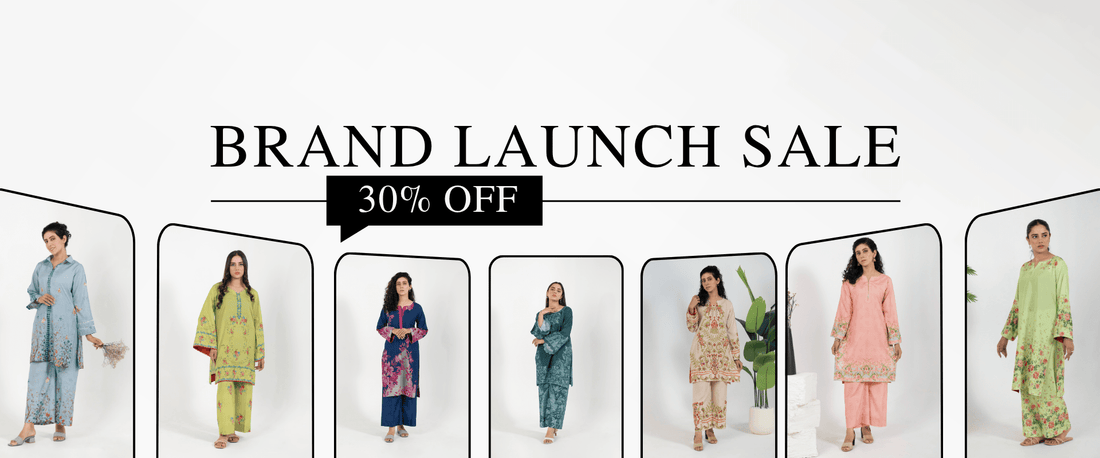Introduction: Where Fashion Meets Heritage
The traditional dresses of Pakistan are a magnificent blend of culture, art, and identity. Every region of Pakistan tells its own story through unique attire — from the colorful Balochi embroidery to the elegant Sindhi ajrak and the graceful Punjabi shalwar kameez. These dresses are not only garments but a living representation of the nation’s diversity, tradition, and creativity.
In Pakistan, clothing goes beyond style — it carries a heritage that connects generations and preserves centuries of craftsmanship.
The Essence of Pakistani Traditional Wear
The traditional dresses of Pakistan are deeply rooted in the customs of its people. From rural villages to urban fashion houses, the love for traditional fabrics, embroidery, and silhouettes continues to thrive. These dresses represent modesty, comfort, and cultural pride — beautifully blending history with modern aesthetics.
Pakistani artisans take immense pride in crafting each piece, ensuring that traditional wear continues to evolve while maintaining its essence. Whether stitched in cotton, silk, or chiffon, the detailing, color, and stitching techniques remain a tribute to Pakistan’s artistic spirit.
Regional Beauty: Diversity Across Provinces
Each province of Pakistan contributes uniquely to the country’s traditional fashion identity. The traditional dresses of Pakistan vary from one region to another, with each offering distinct embroidery, fabrics, and color palettes.
1. Punjab – Vibrant and Expressive
The Punjabi traditional outfit — shalwar kameez — is a staple for both men and women. Women often wear brightly colored dresses with intricate phulkari embroidery, while men wear turbans that symbolize pride and respect.
The richness of Punjab’s culture reflects in its dresses, full of life and color — ideal for weddings, festivals, and everyday wear.
2. Sindh – Art and Symbolism
Sindhi attire is known for its mirror work, hand embroidery, and the famous Ajrak patterns. Ajrak shawls and block prints represent the identity of Sindh. Traditional Sindhi dresses, often paired with handmade jewelry, exhibit deep craftsmanship that has been passed down for centuries.
3. Balochistan – Tribal Elegance
Balochi dresses are admired for their heavy embroidery, wide sleeves, and vibrant shades. Every design carries tribal significance, often inspired by nature or ancient motifs. The handmade embroidery on these dresses can take weeks, symbolizing patience and skill.
4. Khyber Pakhtunkhwa – Grace and Simplicity
The Pathani suit, often worn by men in Khyber Pakhtunkhwa, is both functional and stylish. Women traditionally wear long frocks with embroidery, paired with shawls that add elegance and charm. The clothing here represents simplicity intertwined with strength and tradition.
5. Gilgit-Baltistan – Mountain Heritage
In the northern regions, woolen dresses, caps, and shawls reflect the cold climate and mountain culture. The use of natural fibers and earthy colors gives the attire a timeless and organic appeal.
Traditional Dresses for Women: Grace and Glamour
Pakistani women’s fashion has always found strength in tradition. From bridal wear to casual attire, every outfit narrates a cultural tale. Some of the most cherished forms of traditional dresses of Pakistan for women include:
-
Anarkali Dresses: Inspired by Mughal royalty, these long frocks paired with churidar trousers are ideal for formal events.
-
Sharara and Gharara: These heavily embroidered bottoms paired with short kurtis and dupattas are wedding favorites.
-
Lehenga Choli: Often worn during festive occasions, lehengas feature intricate embellishments reflecting local craftsmanship.
-
Shalwar Kameez: The national dress of Pakistan — elegant, versatile, and worn across all provinces.
Each style celebrates femininity, grace, and cultural pride in a uniquely Pakistani way.
Traditional Dresses for Men: Strength and Style
Pakistani men’s fashion also remains rooted in culture. The most iconic traditional dress of Pakistan for men is the shalwar kameez, representing modesty and elegance. Variations include:
-
Sherwani: A royal garment often worn at weddings and national events.
-
Kurta Pajama: Lightweight and perfect for both casual and formal wear.
-
Waistcoat with Shalwar Kameez: A modern twist to a timeless classic.
These styles showcase Pakistan’s ability to blend tradition with contemporary trends, making them timeless and dignified.
The Role of Fabric and Craftsmanship
What makes the traditional dresses of Pakistan so special is the quality of fabric and the dedication of artisans. From handwoven cottons of Sindh to silks of Punjab, each fabric is carefully selected to match regional climates and preferences.
Embroidery, mirror work, and thread detailing enhance the beauty of these dresses, turning each garment into a masterpiece. Skilled artisans spend days or even weeks perfecting the patterns, ensuring that every piece represents cultural heritage.
Modern Revival of Traditional Attire
Today, modern designers are giving new life to the traditional dresses of Pakistan. By combining classic elements with minimalist cuts, they are making these outfits more wearable and globally appealing. Young Pakistanis proudly wear traditional clothes at festivals, weddings, and even corporate events — celebrating heritage with modern grace.
Fashion houses like Dastkaari focus on reviving authentic styles while maintaining comfort and modern fit. The fusion of tradition and innovation continues to redefine Pakistani fashion.
Cultural Significance: More Than Just Fashion
Traditional clothing in Pakistan is not merely about beauty; it represents respect, identity, and belonging. Every embroidery stitch tells a story of community, every motif reflects cultural symbolism, and every color holds emotional meaning.
The traditional dresses of Pakistan stand as a reminder that true fashion is timeless — deeply rooted in one’s origin while adapting gracefully to change.
Conclusion: Preserving Heritage Through Fashion
The traditional dresses of Pakistan are more than threads and fabric — they are living symbols of Pakistan’s soul. From the deserts of Sindh to the valleys of Gilgit, every region adds to the magnificent story of national identity.
As the world of fashion evolves, these traditional styles remain eternal, admired not just in Pakistan but across the globe. They connect the past with the present, weaving culture, art, and emotion into every piece.
Wearing traditional Pakistani attire is not just about looking beautiful — it’s about honoring the heritage that defines who we are.


